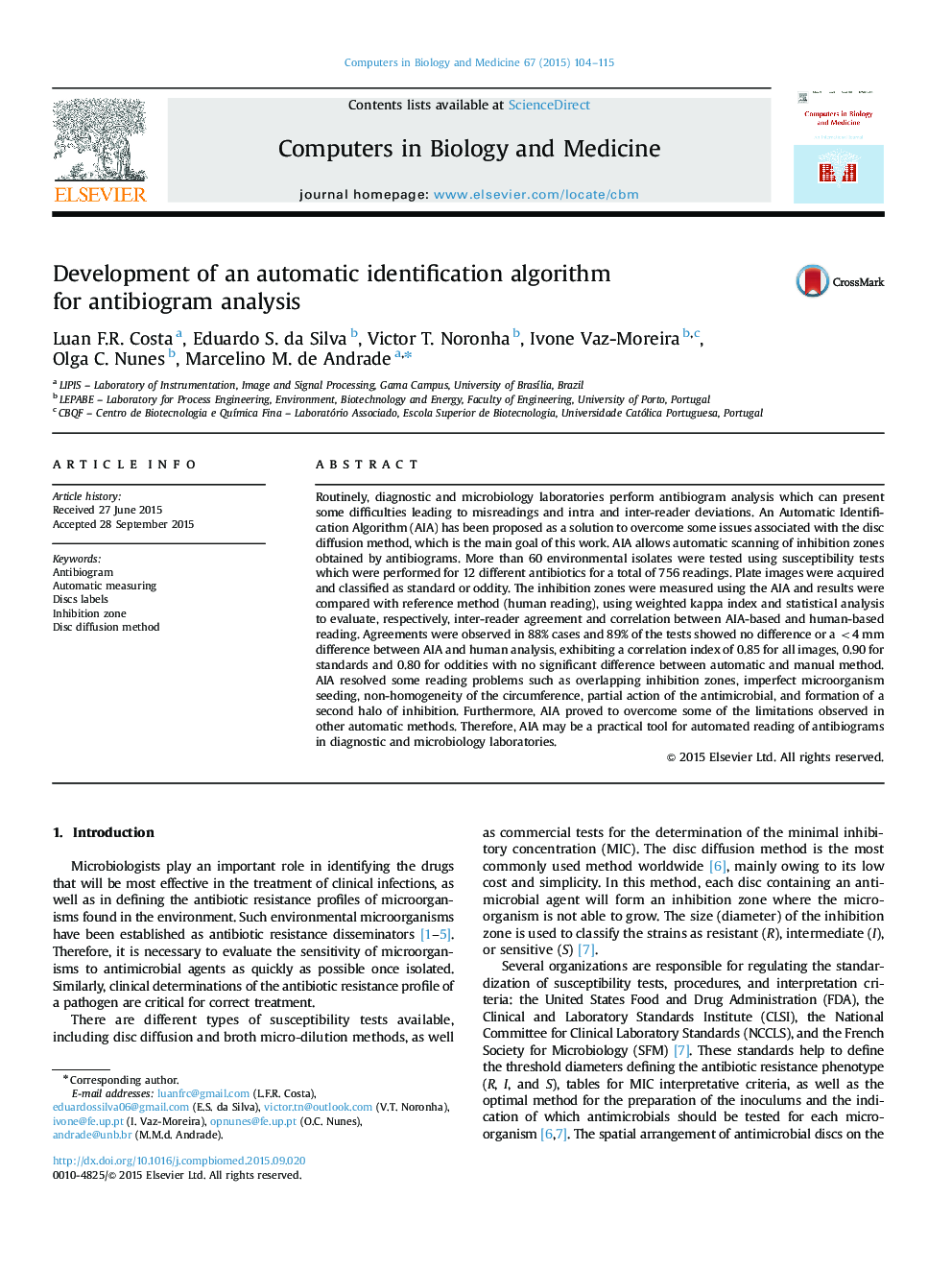| Article ID | Journal | Published Year | Pages | File Type |
|---|---|---|---|---|
| 504852 | Computers in Biology and Medicine | 2015 | 12 Pages |
•Development of an Automatic Identification Algorithms (AIA) is proposed.•AIA allows automatic scanning of inhibition zones obtained by antibiograms.•88.8% of the tests showed no difference between AIA and human readings.•AIA resolved the overlapping of inhibition zones and other reading problems.•Formation of a second inhibition halo were overcomed by AIA.
Routinely, diagnostic and microbiology laboratories perform antibiogram analysis which can present some difficulties leading to misreadings and intra and inter-reader deviations. An Automatic Identification Algorithm (AIA) has been proposed as a solution to overcome some issues associated with the disc diffusion method, which is the main goal of this work. AIA allows automatic scanning of inhibition zones obtained by antibiograms. More than 60 environmental isolates were tested using susceptibility tests which were performed for 12 different antibiotics for a total of 756 readings. Plate images were acquired and classified as standard or oddity. The inhibition zones were measured using the AIA and results were compared with reference method (human reading), using weighted kappa index and statistical analysis to evaluate, respectively, inter-reader agreement and correlation between AIA-based and human-based reading. Agreements were observed in 88% cases and 89% of the tests showed no difference or a <4mm difference between AIA and human analysis, exhibiting a correlation index of 0.85 for all images, 0.90 for standards and 0.80 for oddities with no significant difference between automatic and manual method. AIA resolved some reading problems such as overlapping inhibition zones, imperfect microorganism seeding, non-homogeneity of the circumference, partial action of the antimicrobial, and formation of a second halo of inhibition. Furthermore, AIA proved to overcome some of the limitations observed in other automatic methods. Therefore, AIA may be a practical tool for automated reading of antibiograms in diagnostic and microbiology laboratories.
Graphical abstractFigure optionsDownload full-size imageDownload high-quality image (221 K)Download as PowerPoint slide
